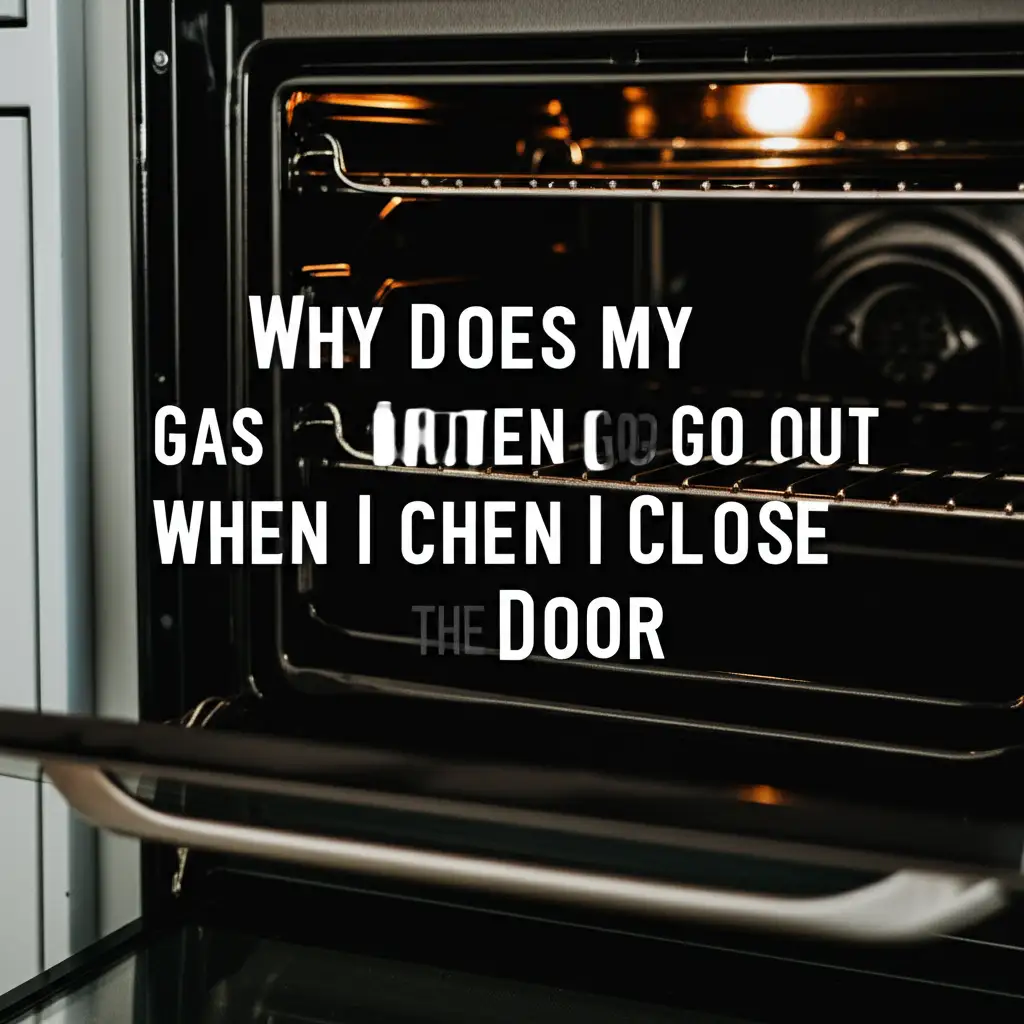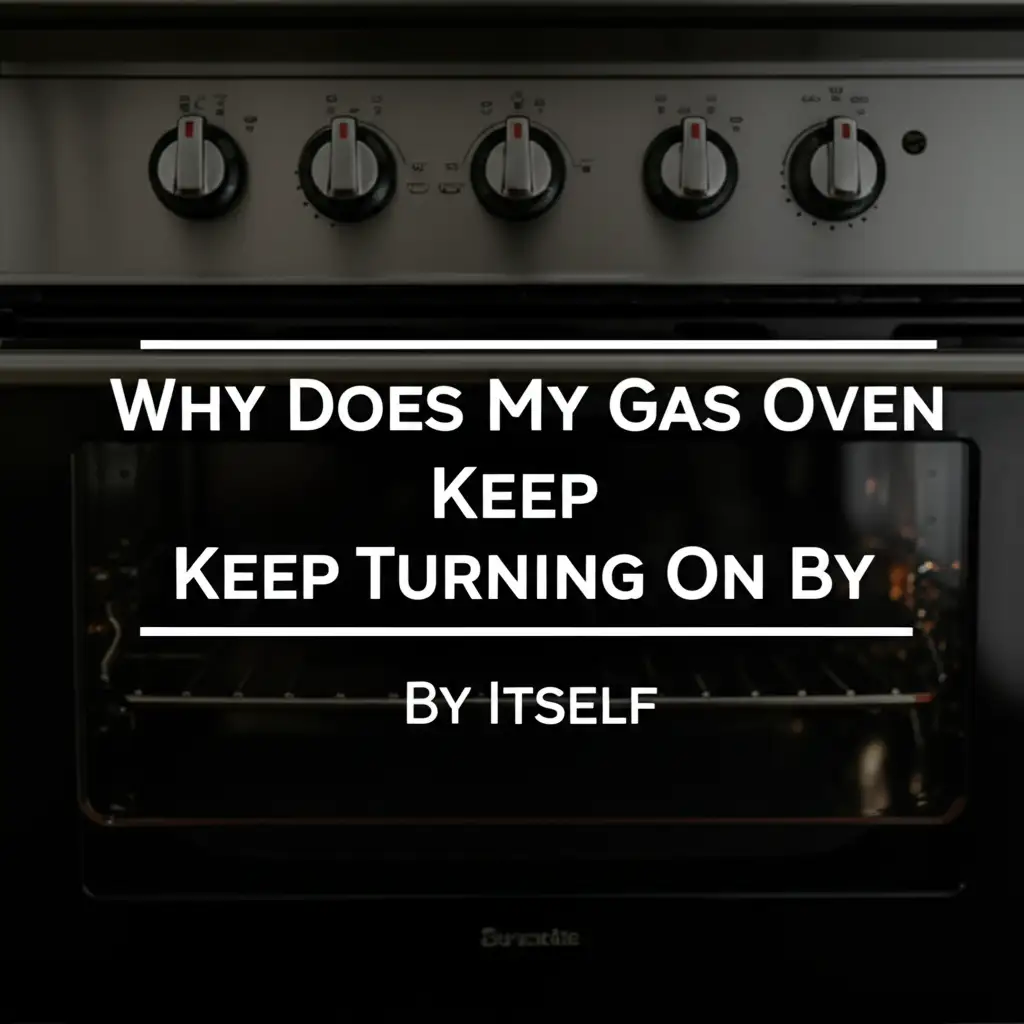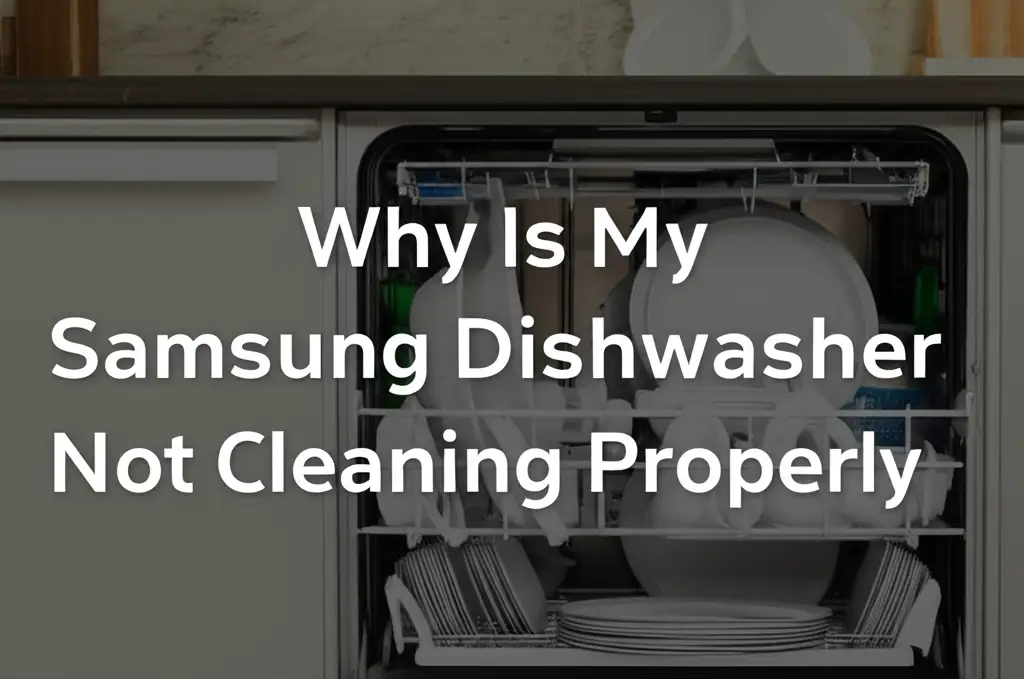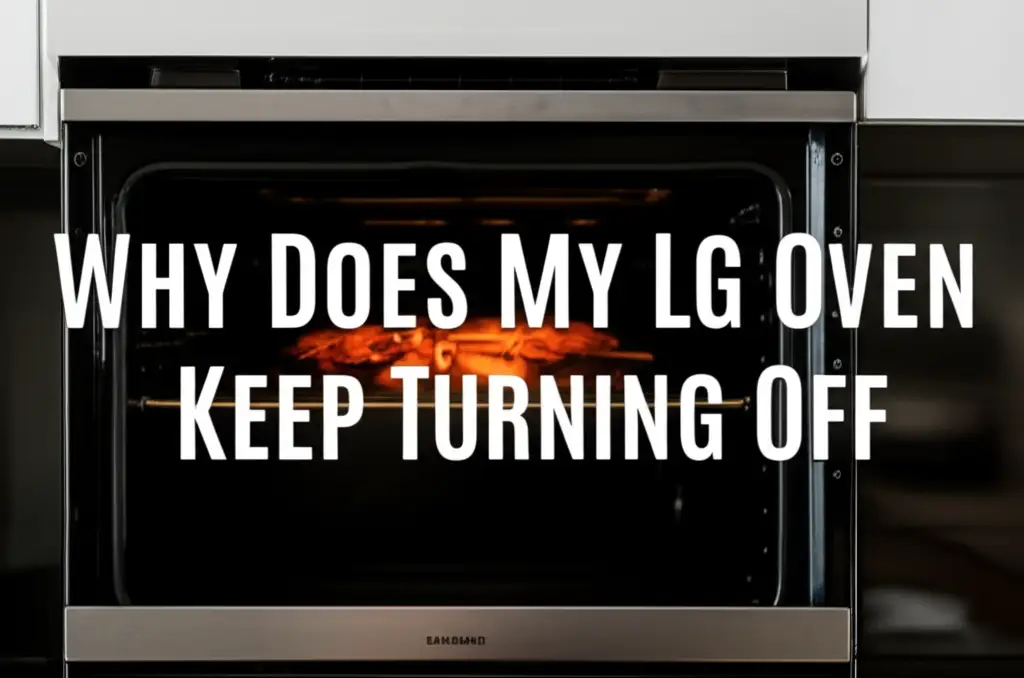· Davia Murnell · Home Appliances · 15 min read
Why Wont My Gas Oven Heat Up But The Stove Works
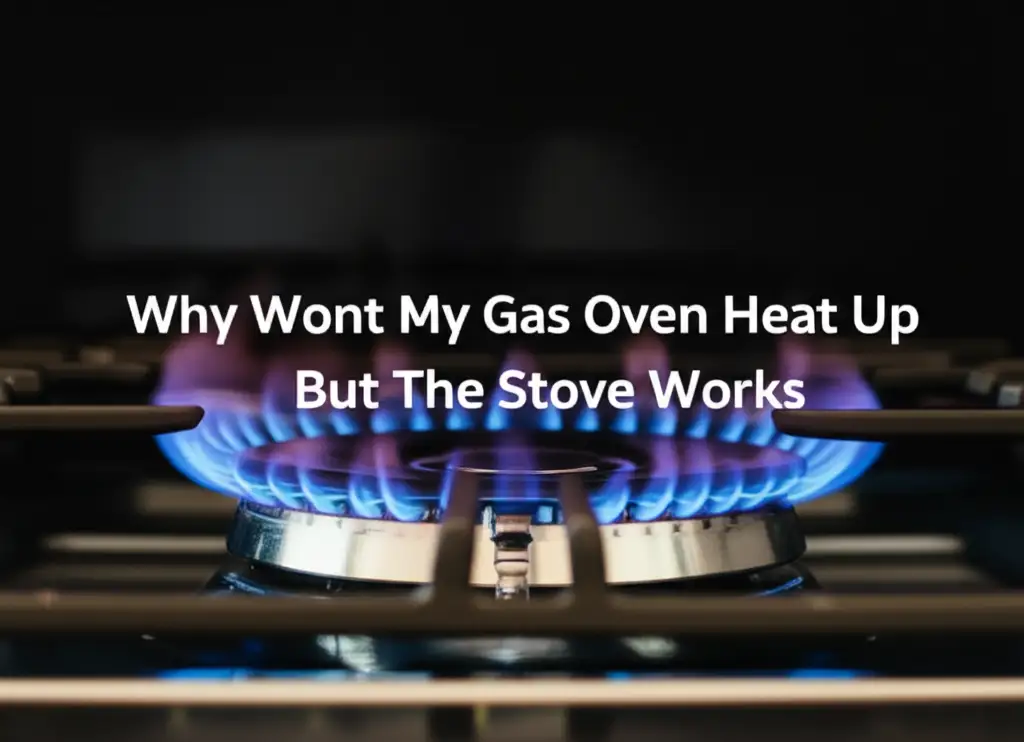
Gas Oven Not Heating? Fix It When Stove Works
It is frustrating when your gas oven refuses to heat up, especially if the stovetop burners work perfectly. This common issue signals a specific problem with the oven’s heating system. Understanding why your gas oven won’t heat up but the stove works helps you identify the fault. You can often troubleshoot and fix these problems yourself. This guide explores the main reasons for this oven problem and offers clear steps to restore your appliance. We will cover igniter faults, sensor issues, and gas supply concerns.
Takeaway
- Check the Igniter: A weak or non-glowing igniter is the most frequent cause for a gas oven not heating.
- Inspect the Temperature Sensor: A faulty sensor sends incorrect temperature readings, preventing proper heating.
- Verify Gas Supply to Oven: Ensure the oven’s gas valve is open and gas flows to the burner.
- Examine the Oven Burner: The burner tube might be clogged or damaged, stopping gas flow.
- Assess the Control Board: A damaged control board can fail to send signals to oven components.
- Review Wiring Connections: Loose or damaged wires can interrupt power or signals.
A gas oven failing to heat while the stovetop functions often points to a specific oven component issue. The most common culprits are a faulty igniter, a defective temperature sensor, or a problem with the oven’s gas valve. These parts are separate from the stovetop’s gas supply and ignition system.
Understanding Your Gas Oven’s Heating Process
How does a gas oven actually heat food? Your gas oven uses a simple yet precise heating method. Gas flows to a burner tube at the oven’s bottom. An igniter then heats up until it glows. This hot igniter signals the gas valve to open.
Gas ignites, producing a flame that heats the oven cavity. A temperature sensor monitors the heat. It tells the control board when to turn the flame on or off. This cycle keeps the oven at your set temperature. If any part of this sequence breaks, your oven will not heat.
The stovetop burners operate independently. They have their own igniters and gas valves. This explains why your stove works but your oven does not. The gas supply enters the appliance. It then splits to serve both the stovetop and the oven. This design means a problem in one area does not affect the other.
Understanding this system helps you find the problem. You can systematically check each component involved in oven heating. This approach saves time and helps you avoid unnecessary repairs. Knowing how it should work makes troubleshooting easier.
Diagnosing a Faulty Igniter in Your Gas Oven
The igniter is the most common reason a gas oven does not heat. My oven once stopped heating, and the igniter was the culprit. This small part does two big jobs. It creates the spark or heat needed to ignite the gas. It also acts as a safety device, ensuring gas flows only when ignition is possible.
When you turn on your oven, listen for a soft click. Then, look inside for a faint orange glow from the igniter. If you see no glow or a weak one, the igniter is likely failing. A weak igniter will not get hot enough. It will not signal the gas valve to open fully. Gas will not release, and the oven will not light.
Sometimes, the igniter glows, but the gas does not ignite. This can mean the igniter is too weak to open the gas valve. You might smell gas briefly if the valve opens slightly without ignition. This situation requires immediate attention. It is safer to replace a faulty igniter quickly.
You can often access the igniter by removing the oven floor panel. Before you start, always disconnect power to the oven. You can check the igniter’s resistance with a multimeter. A bad igniter will show an incorrect resistance reading. Many online guides explain how to do this for your specific oven model. Proper igniter function is key for oven operation. Keeping your igniter clean can also help prevent issues. You can learn how to clean an igniter on a gas stove to maintain its function. how to clean igniter on gas stove
Checking the Oven Temperature Sensor
The temperature sensor plays a critical role in oven heating accuracy. This small probe extends into the oven cavity. It monitors the internal temperature. It sends signals back to the oven’s control board. If the sensor is faulty, it sends incorrect information. This causes the oven to overheat or not heat at all.
I once had an oven that would not hold a steady temperature. It turned out to be the temperature sensor. When the sensor fails, the control board does not know the actual oven temperature. It might think the oven is hot enough when it is cold. This stops the gas valve from opening, preventing heat. Or, it might keep the gas flowing too long, leading to burning.
You can often locate the temperature sensor by looking inside the oven. It is usually a thin rod sticking out from the back or top. Sometimes, the sensor wire gets damaged. This can happen during oven cleaning or from food spills. A visible break or frayed wire suggests a problem. Make sure the sensor probe is not touching the oven wall.
To test the sensor, first disconnect the oven from power. You can use a multimeter to check the sensor’s resistance. The resistance should change as the temperature around the sensor changes. A good sensor will show specific resistance values at room temperature. Check your oven’s service manual for the correct resistance range. If the sensor readings are outside this range, it needs replacement. This step is important for fixing your oven.
Inspecting the Oven Gas Valve and Burner Assembly
While the igniter and sensor are common culprits, the oven gas valve can also cause issues. This valve controls the flow of gas to the oven burner. If it does not open fully, or at all, gas cannot reach the igniter. This stops the oven from heating, even if the igniter glows. A partial opening means a weak flame and poor heating.
The gas valve often works with the igniter. The igniter draws current, heating up. Once it reaches a certain temperature, it allows voltage to flow to a bimetal strip in the gas valve. This strip then opens the valve. If the igniter is weak, it cannot open the valve. If the valve itself is faulty, it will not respond to the igniter.
Sometimes, the oven burner itself can be the problem. The burner tube is where the gas mixes with air and ignites. Over time, holes in the burner tube can clog. Food spills or debris can block the small gas ports. This prevents proper gas flow and ignition. You might see an uneven flame or no flame at all.
You can visually inspect the burner tube. Look for any blockages or damage. Make sure the ports are clear. If you clean your oven regularly, you might prevent some of these issues. You can find guides on how to clean a gas oven inside to keep its components clear. how to clean a gas oven inside
Always turn off the gas supply to the oven before working on the gas valve or burner. Gas work can be dangerous. If you suspect a gas valve problem, it is best to call a qualified appliance technician. They have the right tools and expertise for this repair.
Troubleshooting the Oven Control Board and Wiring
The oven control board is the brain of your appliance. It receives signals from the temperature sensor and user input. Then, it sends commands to the igniter and gas valve. If this board malfunctions, it cannot send the correct signals. This can prevent the oven from heating up. Problems here are less common but can be tricky to diagnose.
I once had an appliance with strange behaviors. It was the control board acting up. A damaged control board might display error codes. It might not respond to button presses. Sometimes, the display works, but the oven simply does not heat. A power surge can damage the control board. Age and general wear can also cause it to fail.
Checking the control board itself is complex. It involves electrical components and circuits. It is not something I recommend for beginners. However, you can check for obvious signs of damage. Look for burnt spots or loose connections on the board. A professional usually replaces the entire board if it is faulty.
Wiring problems are simpler but equally disruptive. Wires connect the control board to the igniter, sensor, and gas valve. A loose, frayed, or burnt wire will interrupt the electrical circuit. This stops power or signals from reaching their destination. A mouse chewing wires is a rare but real problem.
Always disconnect the power before checking wiring. Inspect all visible wires. Look for kinks, cuts, or discolored insulation. Ensure all connectors are tight. Sometimes, simply re-seating a loose connector fixes the problem. If you find damaged wires, they need replacement. Addressing wiring issues quickly can save you money and headaches.
Other Potential Causes and Simple Checks
Beyond the major components, several other minor issues can stop your gas oven from heating. These are often easier to check and sometimes fix. My neighbors once found their oven not working due to a simple oversight. It is always good to start with these simple checks before diving into complex repairs.
- Pilot Light (Older Models): Some older gas ovens use a standing pilot light. If this pilot light goes out, the oven will not heat. You need to re-light it. Follow the instructions in your oven’s manual carefully. Most modern ovens use electronic igniters.
- Oven Selector Dial or Buttons: Ensure the oven is set to the correct function (e.g., Bake, not Broil). The temperature dial must be set above the current room temperature. Sometimes, dials can be stiff or misaligned.
- Door Latch and Seal: The oven door must close and latch securely. A faulty door switch or a damaged door seal can prevent heating. Many ovens will not heat if the door is open or sensed as open. This is a safety feature. Check if the door closes tightly.
- Gas Supply Issues: While your stovetop works, double-check the main gas valve to the oven. Ensure it is fully open. Sometimes, gas pressure can be low, affecting the oven more than the stovetop. This is rare but possible.
Checking these simple things first can save you a lot of time. Always ensure the oven is unplugged or the circuit breaker is off before touching any internal parts. If you are not comfortable checking these points, a professional technician can help. Regular oven cleaning can also help prevent issues. For example, knowing how to clean the bottom of the oven can prevent debris from affecting components. how to clean bottom of oven
When to Call a Professional for Oven Repair
While many oven problems have simple fixes, some situations require professional help. Knowing when to call a technician saves you time, money, and prevents further damage. I learned this lesson after attempting a repair that was clearly beyond my skill level.
- You Smell Gas: If you smell gas at any point, stop what you are doing immediately. Turn off the gas supply to the oven. Open windows for ventilation. Do not use any electrical appliances or create sparks. Call your gas company or a qualified technician right away. Gas leaks are dangerous.
- Complex Electrical Issues: If troubleshooting points to the control board or complex wiring, a professional is best. These parts involve sensitive electronics and high voltage. Incorrect handling can lead to further damage or electric shock.
- Gas Valve Malfunctions: The gas valve is a critical safety component. Problems with this part should only be handled by trained professionals. They have the tools and knowledge to safely diagnose and replace it.
- Lack of Confidence or Tools: If you feel unsure about any step or lack the necessary tools, do not proceed. Attempting a repair without proper knowledge can make the problem worse. It can also void your oven’s warranty.
- Persistent Problems: If you have tried common troubleshooting steps and the oven still does not heat, it is time for an expert. They can use specialized diagnostic equipment to pinpoint hidden issues.
A qualified appliance technician has the training to work safely with gas and electricity. They can quickly identify the problem and replace faulty parts. They also ensure your oven meets safety standards after the repair. Investing in professional help when needed ensures your home remains safe and your oven works correctly. It also protects your investment in your appliance.
Maintaining Your Gas Oven for Longevity
Regular maintenance helps keep your gas oven working well. It can prevent many of the heating issues we discussed. A well-maintained oven runs more efficiently and lasts longer. I make it a point to clean my oven regularly to avoid common breakdowns.
- Regular Cleaning: Clean your oven regularly to prevent food spills and grease buildup. Debris can clog burner ports or interfere with the igniter. You can learn how to clean your gas oven effectively. how to clean gas oven Using simple household items like baking soda and vinegar is effective. how to clean your gas oven with baking soda and vinegar
- Inspect Burner Ports: Periodically check the oven burner ports for blockages. Use a small wire or needle to clear any stubborn debris. Ensure the flame is even and blue when the oven heats.
- Check Door Seal: Inspect the oven door gasket or seal for cracks or wear. A damaged seal lets heat escape. This makes your oven work harder and reduces efficiency. Replace a worn-out seal quickly.
- Verify Ventilation: Ensure the area around your oven has good airflow. Proper ventilation helps the oven operate safely and efficiently.
- Handle with Care: Avoid slamming the oven door. Rough handling can damage the door switch or hinges. Be gentle when pulling out racks.
- Professional Check-ups: Consider a professional appliance check-up every few years. A technician can spot potential problems early. They can perform routine checks and calibrations. This proactive approach can extend your oven’s life.
Taking good care of your gas oven saves you from unexpected repairs. It ensures your oven is ready when you need it for cooking. A little maintenance goes a long way.
Frequently Asked Questions About Gas Oven Heating Problems
Why does my gas oven glow but not ignite?
If your gas oven igniter glows but fails to ignite, it is likely weak. The igniter needs to draw enough current to heat to a specific temperature. This temperature opens the gas valve. A weak igniter cannot generate enough heat to fully open the valve. This means gas does not flow, and ignition cannot happen. Replacing the igniter usually fixes this.
Can a dirty oven cause it not to heat?
Yes, a very dirty oven can prevent it from heating properly. Excessive grease and food debris can clog the oven burner ports. This stops gas from flowing evenly. It can also coat the igniter, preventing it from heating or sparking effectively. Regular cleaning helps ensure clear gas flow and proper igniter function.
How do I reset my gas oven?
To reset your gas oven, first turn off the oven at the control panel. Then, disconnect the power supply to the oven. You can do this by unplugging it or by turning off its circuit breaker at your home’s electrical panel. Wait for about 5-10 minutes. Restore power. This can clear minor electronic glitches.
Is it safe to use a gas oven that won’t heat up?
No, it is not safe to use a gas oven that won’t heat up if you smell gas. If you do not smell gas, but the oven simply does not heat, it is generally safe as long as no gas is escaping. However, an unheating oven is useless. Address the problem quickly. Call a professional if you suspect a gas leak or major component failure.
How much does it cost to fix a gas oven that won’t heat?
The cost to fix a gas oven that won’t heat varies greatly. It depends on the faulty part and whether you hire a professional. Replacing an igniter often costs $150-$300, including parts and labor. A temperature sensor can be $100-$250. A new control board or gas valve is more expensive, often $300-$600 or more. DIY repairs save on labor costs.
How long do gas oven igniters last?
Gas oven igniters typically last between 5 to 7 years. Their lifespan depends on how often you use your oven and the igniter’s quality. Frequent oven use or repeated on-off cycles can shorten its life. A failing igniter often shows signs of weakness before complete failure. It might glow dimly or take longer to ignite.
Final Thoughts on Fixing Your Gas Oven
It can be annoying when your gas oven won’t heat up but the stove works. This common problem usually points to specific oven components. I hope this guide has helped you understand the main causes. Knowing about the igniter, temperature sensor, and gas valve is a great start. Simple checks and maintenance often fix the issue.
Remember to prioritize safety. Always disconnect power before checking electrical parts. If you smell gas, turn off the supply and call a professional immediately. For complex repairs or if you lack confidence, an appliance technician is your best resource. Regular cleaning and small maintenance tasks will extend your oven’s life. This keeps it working efficiently for many years. You can take on many home repairs yourself, but knowing when to call a professional protects your home and appliance.


